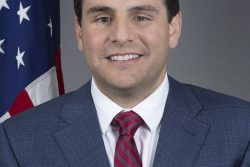We are no strangers to riots in this country, but London apart, where street violence in the central areas particularly is anything but unknown, it is not a common occurrence in England as a whole. Yet since last Tuesday there have been violent disturbances in a number of towns and cities across the country. The last time this occurred was in 2011, but its origins were altogether different, if not the reverse of the current manifestations. On that occasion it followed the killing by the police of a man of mixed race in Tottenham, London, following which the trouble spread to other areas. In terms of the use of social media, however, it was a harbinger of things to come.
This time the riots were instigated by the far right, initially with reference to the killing of three small girls at a dance class in Southport, which it said had been perpetrated by an Islamic refugee who had arrived in a small boat the week before. It was a complete fabrication of course, but it provided the impetus for a wave of anti-immigrant, anti-Islamic and racist sentiment to be stirred up. The riots attracted more than far-right activists, since they were joined by petty criminals who saw an opening for engaging in violence and looting, by young teenagers in some places who saw the action as an opportunity for ‘fun,’ by a few inebriated patrons emerging from the pub and in two cases a bingo game, and by members of the public who were persuaded by the anti-immigrant message.
The police who had to confront these disparate riots appeared undermanned, and in the smaller towns inexperienced, their compulsory training notwithstanding. The public too in Rotherham, at least, seemed naïve, at the beginning bringing their small children in strollers out to watch the action as if it were a performance. The far right’s one foray into Whitehall near Downing Street encountered the infinitely better manned, resourced and experienced Met, and when they next planned to take on London again it was not in the centre but in the outer boroughs, which as shall be seen, fell through.
Brimming with over-confidence they identified asylum centres, the offices of lawyers who work for immigrants and various other locations on social media, and announced demonstrations for Wednesday night in a huge number of towns up and down the country. These never materialised. Instead the English public spoke. They came out in their tens of thousands to protect the sites named, as well as mosques – it was said that five thousand came out in the London borough of Walthamstow ‒ and there was nowhere for the far right to go. No doubt to their grim amusement, the police had to escort a small group of far-rightists in Brighton out through the counter-demonstrators to safety.
These counter-demonstrations were partly organised through anti-fascist and anti-racist groups, and in the north by the trade unions, but many people just came out spontaneously, no doubt often having read about the proposed events online. There were too the usual crop of entertaining incidents, such as when a group of slightly nervous worshippers in Birmingham walked up the road towards their mosque with a view to protecting it. As they passed a pub they were taken aback when the drinkers inside rushed out, not to attack them, but to give them a hug.
The citizens’ demonstrations coincided with the decisions of officialdom, the Prime Minister reprising some of the actions he had taken when he was Director of Public Prosecutions in 2011. The Crown Prosecution Service said it was prepared to sit for 24 hours a day if necessary, so after arrest suspects were brought before the courts almost immediately, and when found guilty draconian penalties were handed down. Cells were cleared to accommodate those sent to jail. The police were using all kinds of sources to identify perpetrators, and when they had done so, they were effecting dawn arrests. After conviction, a perpetrator’s photo would be published in the media. By Wednesday, the first convicted rioters had already had their photos published and had been handed down prison terms. Perhaps that served as a deterrent as was hoped.
In addition to that the Met Commissioner announced a change of police tactics with the formation of a specialist unit of 6,000, which would be on standby to respond to any area which came under pressure. Despite all of this, the police remained suitably unconvinced that the crisis was necessarily over after Wednesday, and thought there might still be trouble last night.
Behind all of this disruption lies the shadow of social media and its capacity to spread lies instantly and be believed. “There’s always been violence,” the Guardian quoted 2021 Nobel Peace Prize winner Maria Ressa as saying, “What’s brought violence mainstream is social media.” Furthermore, “[W]hat used to radicalise extremists and terrorists is now radicalising the public. Because the information ecosystem is designed that way.”
It is known that younger people in the UK are more likely to derive their news from social media than traditional news outlets, and the newspaper described social media as a “polarisation engine.” There are certain leading figures inciting the riots, in particular Tommy Robinson who has 900,000 followers on X. Operating from his sunbed on a beach in Cyprus he has been stoking the flames of hate which produced a rampage on so many streets. He had earlier been banned from Twitter, but since Elon Musk has taken over X, he has been reinstated.
And as for Elon Musk himself, whose genius in specialist areas of technology is well known, it is now clear that he is not very bright where other fields of endeavour are concerned. There he is repeating untruthful far-right tweets which have appeared on his platform, all in the name of supposed free speech. In particular he has made plainly nonsensical allegations against Britain’s Prime Minister, and said that “Civil war is inevitable” in the UK. And this from a man who has 193 million followers.
As January 6, 2021 in Washington demonstrated, the danger of social media is mostly the same all over the Western world, although that said, it is not too clear how it operates here in Guyana, or which sectors of society have access to it. It is an area in need of research given what is happening elsewhere.






